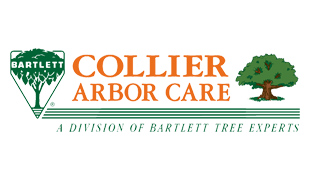|
Current Issue - Spring/Summer 2013 Show Back Issues |
|
||

"Our Newest Board Certified Master Arborist"Lyle Feilmeier is originally from Kearney, Nebraska where he worked for a local tree care company. He was already a Certified Arborist when we hired him in 1995 as a lead tree climber. He quickly moved up our ranks, becoming a crew leader and assistant pruning supervisor in 1997. Later that year, Lyle suffered a serious injury in a tree climbing accident, which prevented him from further climbing. Because of his knowledge, work ethic and personality, he was promoted into the sales department. In 1999, he became the pruning department supervisor, which he did along with his duties as an outside sales person. Working for almost a year on the project, Lyle was instrumental in helping Collier Arbor Care become the first Accredited Tree Care Company on the West Coast in October of 2004. Since the winter of 2004, Lyle has served on the board of Certified Tree Safety Professionals. On this board he helped develop a credentialed safety training and certification for tree care professionals in the arboriculture industry. In 2006, with a strong commitment to his profession, Lyle became Collier Arbor Care+s second Board Certified Master Arborist (Terrill Collier being the first). Congratulations Lyle! Sequoia Pitch MothSequoia Pitch Moth (SPM) occurs from northern California to British Columbia. SPM can infest several conifer species, but mainly they attack pines such as Japanese Black, Ponderosa and Shore pine. Despite the name, they do not infest Sequoia trees.  Not harmful to people or pets, the Sequoia Pitch Moth is clear-winged and resembles a yellow jacket.
Not harmful to people or pets, the Sequoia Pitch Moth is clear-winged and resembles a yellow jacket.
Damage from SPM occurs primarily from the larvae feeding under the bark in the cambium layer. Their feeding injury causes the tree to produce copious amounts of unsightly resin. This insect rarely kills the trees, however; limbs may be weakened or killed. The SPM adult is a clear winged moth that mimics a yellow jacket to protect it from predators, however, it cannot sting. Larval infestations are recognizable by pinkish pitch masses that protrude from infested trunks and limbs. As the larvae feed and grow beneath the mass, it enlarges and hardens, becoming a darker gray. Old pitch masses can remain on the bark for several years. Adult moths emerge in mid- summer and lay eggs on the bark, usually in crevices around pruning wounds and other injury sites. Larvae hatch and enter the injury site where they feed in the inner bark for the next two years. SPM mainly attacks damaged trees, either from pruning wounds, storm damage or other mechanical injury, such as staking or weed eaters. To avoid an infestation it is best to only prune infested trees during the dormant season. Watering, mulching and fertilizing are important cultural practices to reduce the impact of infestation.  Pitch masses protruding from trunks or limbs -- a sure sign of infestation.
Pitch masses protruding from trunks or limbs -- a sure sign of infestation.
Controls include careful removal of the pitch masses and removal of the larvae within. Larval removal and tree pruning should be done during the dormant season. Adult moths are attracted to fresh wounds to lay eggs. Also application of a long lasting insecticide before moths fly in the summer can prevent new infestations. |

Provide winter interest with "Sango kaku" Japanese Maple. 
Green, crinkled foliage of the "Shishigashira". 
"Tamukeyama" shows off its brilliant spring and summer color. Featured Tree: Japanese MapleThere is probably no other tree in our Northwest gardens that is better known, more admired or widely planted than the Japanese maple. It has four season interest starting with reddish new growth in the spring, soft green foliage in the summer, wonderful fall color of yellow, red and orange, and slender branches of green and red providing interesting winter patterns. With over 200 named cultivars the diversity of size, foliage color, leaf shape and form will fit almost every landscape need. Japanese maples grow in their native land in a climate similar to western Oregon. They grow slowly to 20-feet tall and wide, and are typically multi-stemmed. Japanese maples prefer moist well drained soils and grow best in dappled shade just like our native vine maples. Some cultivars especially the dark foliaged and the delicate dissected leaf varieties will suffer from leaf scorch in hot sun. Although susceptible to aphids, their main serious problem is Verticillium wilt, a soil-borne fungus that plugs up the water conducting vessels and results in branch dieback and death of the tree. Do not plant another maple in the same area where one has previously died. Several of the best and most poplar cultivars include; "Bloodgood": Upright growth to 15-feet, deep reddish purple foliage. "Butterfly": Green leaves edged in white. "Dissectum": Also known as the lace leaf maple. It grows in a low mound with very finely divided leaves. There are green and red leafed ("Ornatum") varieties. "Sango Kaku": Upright growth, branches and twigs are a striking coral red color. "Seriyu": Has finely dissected leaves which are unusual for an upright growth form. "Shishigashira": Fun to pronounce and even better to see with bright green crinkled foliage. Storm-Damaged Trees?Winter wind and snow storms have caused tremendous stress and severe damage to our trees in the Portland area this year. Obviously, a snapped or downed tree should be removed, but what about a tree that suffers minor to major damage? How can a homeowner tell if a tree is safe? Assessing the Damage
More severe damage: large broken branches, split crotches, removal of bark, and splitting or splintering of the trunk -- can be caused by strong winds and heavy ice storms. When a tree is severely damaged, the first question that must be answered is: "Is the condition of the tree such that keeping it is worthwhile?" A Collier Arbor Care Certified Arborist should be consulted to answer this question. "Our arborists will take the time and effort to save a tree only if the tree will still be healthy, attractive, and of value to the property owner after repairs," explains Terrill Collier, Board Certified Master Arborist. "We may recommend removal of a tree that has brittle wood and a branch structure that makes it vulnerable to additional damage from future storms. Trees that have been topped by storms are prime candidates for removal." Other factors to consider when determining if a tree is worth saving:
Age. Growing location. Value it adds to the property. Sentimental Value. If a tree is not worth saving, remove it as soon as possible. If it is not removed and the tree dies, it could become a hazard tree. Removal of hazard trees is dangerous to the tree care crew and requires special techniques, adding to the cost. Treating the Tree
What a Collier Arbor Care Certified Arborist can do for you:
Evaluate trees with large cavities, structural problems, or extensive trunk or root decay and remove if deemed hazardous. Thin crown-thick trees by removing 10-20% of the branches and foliage to reduce weight and wind resistance. Crown-clean trees to remove dangerous deadwood and hangers. Remove large leaning trees with cracked soil and exposed root balls. Remove or cable branches with v-crotches or weak branch attachments. Sub-surface fertilize to stimulate new growth. Apply mycorrhizae, a beneficial root fungus, to help speed recovery and reduce stress. Apply Cambistat® to stimulate root growth, reduce excessive top growth, and help stimulate resistance to stress (See Cambistat® article). Plants Growing Too Fast?New Product: Cambistat® A new product called Cambistat® is now available to slow the growth of some of your trees, shrubs and hedges by 40 to 60% over a three year period. Applied as a soil drench, Cambistat® can be used to reduce plant growth for the following situations: Hedges, trees near buildings, under power lines, and blocked scenic views to name a few. This will save on long term pruning maintenance costs. Cambistat® has additional health benefits to trees including; root system enhancement, improved drought resistance, and higher tolerance to insects and diseases. Some of the situations we use Cambistat® include: construction damaged trees, declining older trees, trees stressed from drought, injury caused by insects and diseases. Cambistat® works as a plant growth regulator by redirecting canopy growth into defense chemicals, fibrous root production, thus making your trees more durable and healthy. Please call today to schedule one of our arborists to evaluate your trees for Cambistat®. |
|
Home |
Services |
The Arbor Advisor |
Garden Calendar |
About Us |
Fact Sheets |
Contact Us |
Site Map Collier Arbor Care Portland 503-722-7267 Vancouver (360) 693-6056 Site contents and design ©2013 Collier Arbor Care |







 top »
top »